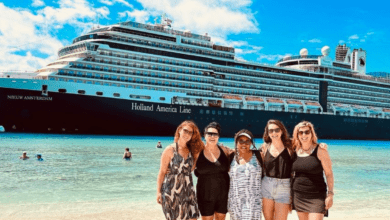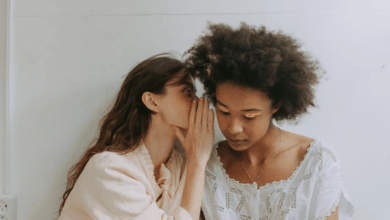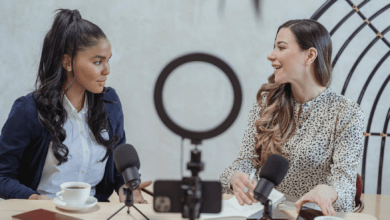
Lesbians loving DIY isn’t just a stereotype. Not only do some lesbians still escape heteropatriarchy by living in self-sufficient communes all over the world — the migration made popular among 1960s-70s second-wavers — but the statistics show we are more capable of building and fixing stuff than other sexual orientations! Whether we live in a city apartment or a ranch in the country, lesbians are doing it themselves.

Lesbians are doing it for themselves
Straight men aren’t the boss of building. Lesbians are. A YouGov study found that lesbians are way more confident with an IKEA flatpack than straight men and women. In fact, gay men weren’t that far behind us in their IKEA capabilities.
When lesbians want to live alone — with or without a partner — a very backwards argument is the old “who’s going to fix stuff? Who’s going to do the ‘men’s jobs’?” Well fixing things isn’t a ‘man’s job’ and never was. According to the study, lesbians are more confident with unblocking drains, changing a lightbulb and putting up shelves than our straight counterparts. Gay men rivalled us for top position in most examples. Gay men are better at ‘men’s jobs’ than straight men!

I’m going to put my hand up and say that I’m one of those lesbians who are not good at fixing stuff. Changing a tire has been the theme of many terrifying nightmares. I can change a lightbulb but always buy the wrong bulb because I get overwhelmed with all of the choices. Sometimes I accidentally leave the light switch on while I do it. I would be the last person you’d ask to put up a shelf because I don’t care if things are straight (ha!). IKEA? Don’t even know her.
Without getting too deep about it — I can get deep enough in just about anything, other than a drain — I subconsciously ask other people, who often happen to be men, to do the DIY stuff I could probably learn to do myself. I’m not alone. Arwa Mahdawi writes for the Guardian, “My lack of DIY skills is an embarrassment to lesbians everywhere…Whenever I have to do anything more challenging than changing a light bulb, I call my friend Dan, a man. Or I hire a handyman; it’s often difficult to find a handywoman, although I do try…having to rely on a guy for manual work is not great for my sapphic street cred.”
Smack my wrist, I’m a bad lesbian feminist. However, the moment a man says I can’t do something, I’m prepared to die by electrocution to prove I can. Just like when childhood teachers would call out to the class, “I need a strong boy to come and help carry these chairs.” I’d be off the floor before the boys were. I’d be carrying ten chairs at once. I’d be death-staring the teacher who suggested girls are weak.
Lesbians like Mahdawi and myself still subconsciously source help for “easy” DIY fixes instead of learning to become more self-reliant, which is an option for most lesbians, so when and why did DIY become such a common lesbian interest and skill?
Living off the land
Lesbians have a history of self-sufficiency. Womyn’s land — communal living among women — became an established practice and movement among lesbians in the 1960s, coinciding with second wave feminism. Communal living among lesbians, separating ourselves from the mainstream heteropatriarchal way of life, requires learning how to build and fix things ourselves, instead of relying on the society we resist. Lesbians are the queens of ‘slow living’: we have been changing our own tires, creating our own veggie patches, making our own art, and living our lives in ways that resist fast consumerism long before it was cool.

Rina Raphael, writing for The New York Times, points out that, while womyn’s land still exists, they’ve “failed to attract a new generation of members.” These lands were “collectively purchased…[they built] communities from scratch…they erected outhouses, laid pipelines and set up chicken coups. In the process, many found romance. Membership grew by word of mouth, and eventually a directory of womyn’s lands was compiled.”
Despite the amount of lesbians who could use their DIY skills for such lands in 2021, including “tending to the farm, repairing buildings, [and] overseeing finances,” lesbians just aren’t as keen. Or are we? Cottagecore becoming a growing part of lesbian culture indicates we aren’t opposed to the idea.
Landykes of the South writer, Rose Norman, says that “It can’t be overstated how hard it was for lesbians to find each other before the networking and consciousness raising that came with the women’s movement.” I would argue that it’s still hard for lesbians to find each other. We just have new battles. Lesbianism is conveniently erased. It’s expected we drop the word ‘lesbian’ for ‘qu**r’, to cater to everybody.
How can we find each other when the word ‘lesbian’ is now viewed as regressive, and lesbians of all ages are convinced not to use it? Feminism has changed, too. Instead of living a self-sufficient life that resists patriarchy, like living on womyn’s lands, we’re taught that consuming and ‘leaning in’ to corporate jobs are ‘empowering’ acts. #girlboss!
While we buy mugs that say ‘male tears’ and find the next rainbow-colored clothing or accessory item from whichever major brand pretends to give a crap about gay people at the moment, elderly lesbians who have lived in separatist communes for forty years are being forced back into towns because younger lesbians aren’t taking the helm. Perhaps it’s time lesbians use our DIY skills to get out and help our local womyn’s land.






I once knew and tired house of diy lesbians. Their landlord wanted them to move so he cud increase the rent cus they improved its value so much. Anyhow here sign lesbians love, house music. BBC is evil af and tries to blame rap for the paradise garage NYC house club closing wen it was aids killing the owner etc. But BBC is racist af n BBC world service is BBC Reyna lie n pretend they ain’t evil af blah blah . U need a VPN or get a uk person to rip it. Or on radio
Dance divas: 1978-1988
The Documentary Podcast
Meet the pioneering women of New York’s underground dance music.
Show more
Meet the pioneering women DJs, producers, vocalists and remixers who were part of the New York underground dance scene from disco onwards. Presented by the Queen of Clubland herself, Martha Wash, whose vocals feature on 12 number one Billboard Dance chart hits to date.
All the women are linked by one nightclub, the Paradise Garage, which alongside underground clubs in Chicago and Detroit would help lay the foundation for modern dance music. Underground DJ’s, clubs, and producers were not only important in breaking mainstream hits, they were also a safe haven for LGBTQ+ People of Colour.
We meet Yvonne Turner, Rebecca Mackenzie, Carol Cooper, Gail Sky King and Sharon White, who were all Paradise Garage regulars from its opening in the late 70s. We follow their first steps in the music business, after the death of disco.
In a cut-throat music industry, many women, including Martha, had to fight to get proper credit for their work, and recognition for their achievements is long overdue. Now in their 60s, we follow their remarkable stories over several decades, as underground dance music evolved from disco into house, striving for success in an environment which was often hostile to women. At the same time, the NYC underground scene was hit by the Aids crisis, gentrification, and the rise of hip-hop.
Presenter: Martha Wash
Producer: Victoria Ferran
Show less
Release date: 17 April 2021